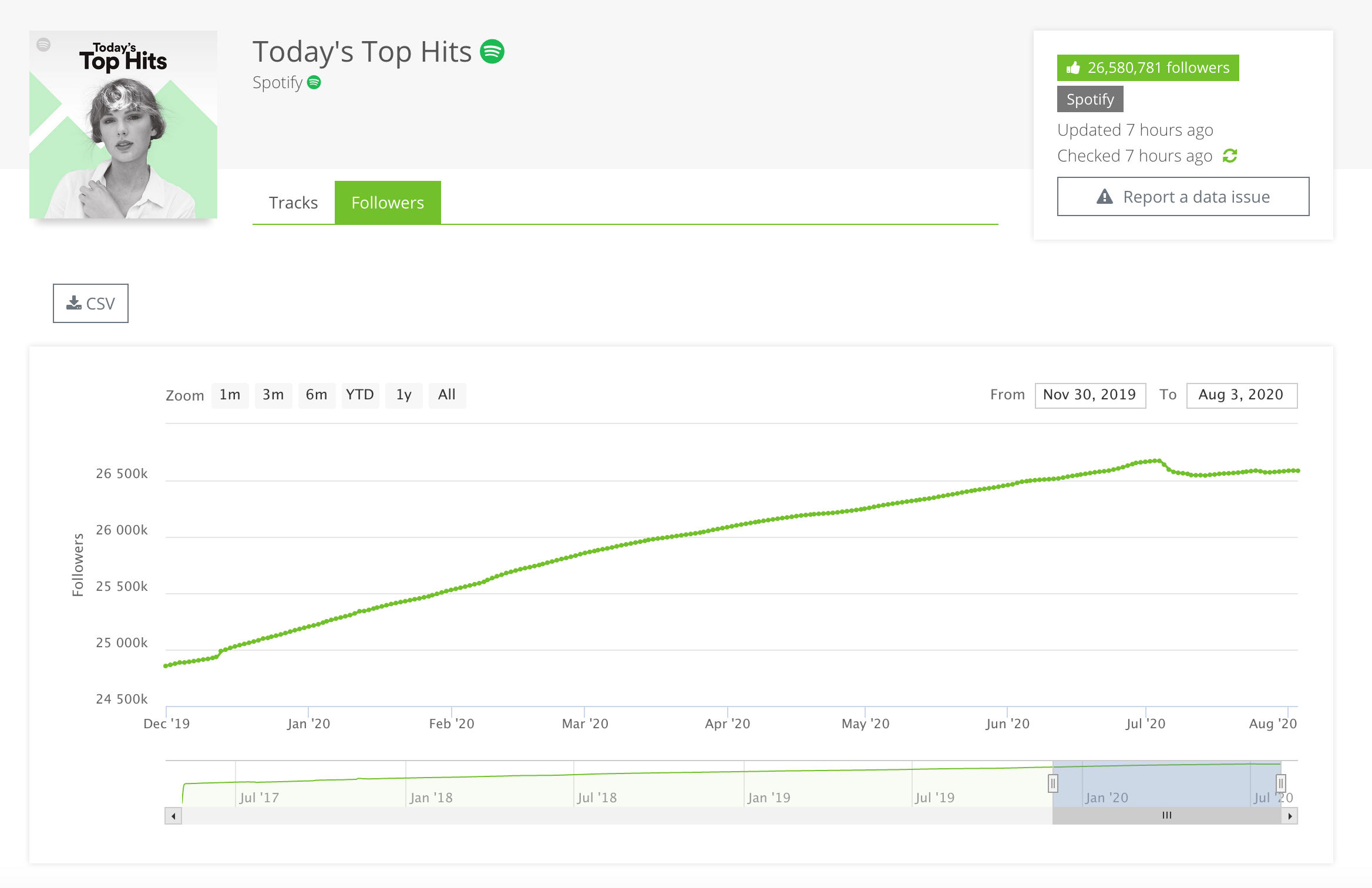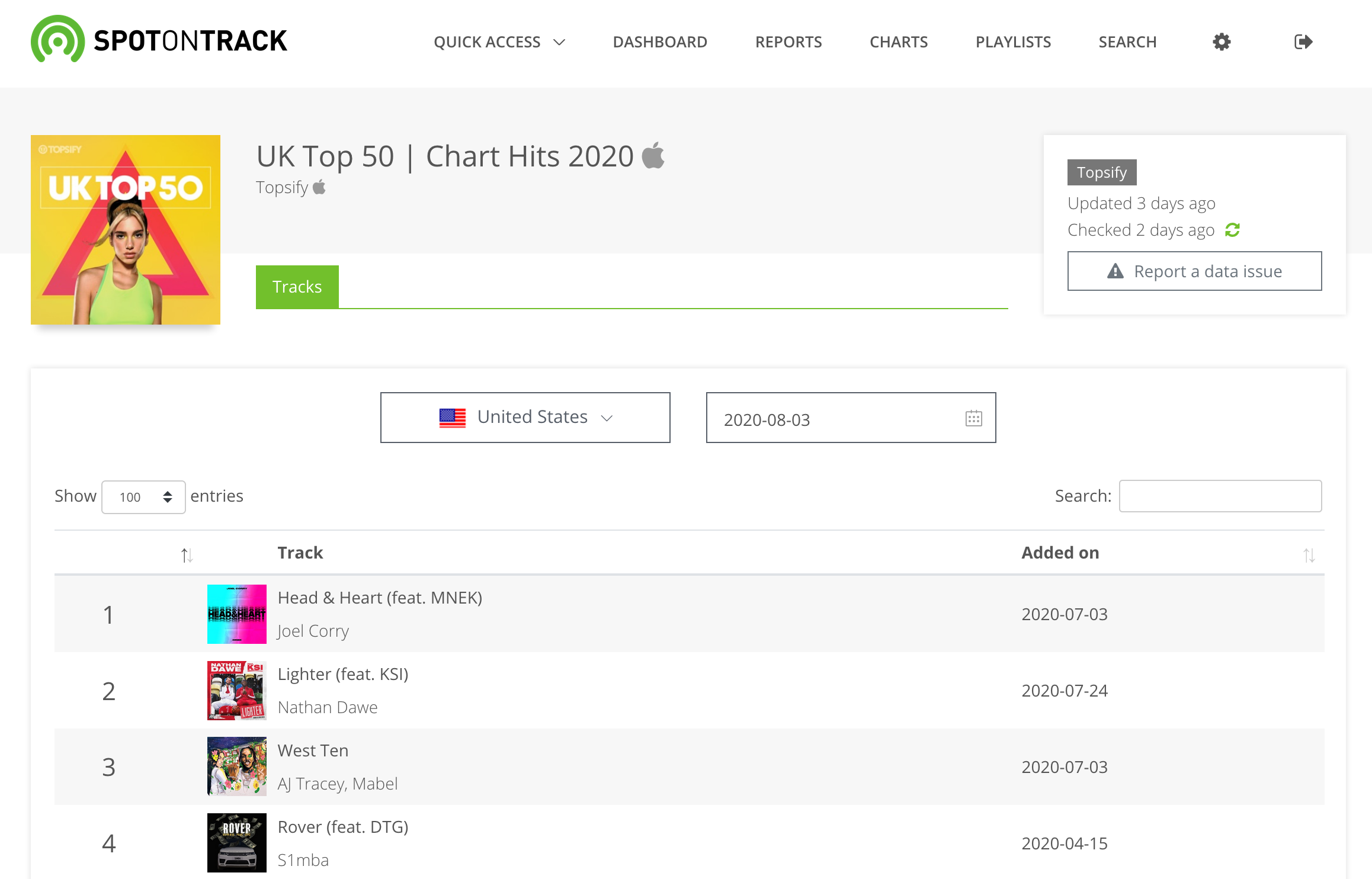Introducing the Playlists page
Published in Getting Started
Tracking more than 7 million of playlists means we have a huge amount of data that you can use. Here is how to find a playlist and its related data, and all the details from the playlist page.
We have built a dedicated place to search playlists, which is not integrated in the normal search (that you can use for tracks, albums, artists and labels). Just click on the 'Playlists' item in the top menu.
This search will obvisouly be limited to playlists, but works for all the platform that we track, currently Spotify and Apple Music. Switch tabs to go from Spotify to Apple Music results. The search accepts keywords but also Spotify playlist URI or link, or Apple Music links. That is usually easier to use the link if you are looking for a specific playlist.
Once you found the playlist you are looking for, click on the playlist name to get more details.
Spotify playlists
On the playlist page, we display many information. The most important is of course the list of tracks that are currently in the playlist, as well as the date at which the track was added. Just to make it clear, this is the tracks we saw in the playlist the last time we checked it. There could be a delay between the moment a playlist is updated on Spotify and the moment we record the update.
Some editorial playlists from Spotify are also personalized for each user, based on his listening history and music taste. In such case, we only record the standard version of the playlist given by the Spotify API, without any personalization.
If you click on the date, you can also see previous versions of the playlist. That could be interesting if you want to see what the playlist looked like maybe a year ago.
On the top right of the page, the small info box helps you know more about the playlist:
- Current number of followers (recorded the last time we checked the playlist)
- Tags (with grey background): For Spotify, we have multiple tags that we assign manually to the playlists so that you can identify easily Spotify editorial playlists (tag 'Spotify'), Filtr, Digster and Topsify playlists, as well as New Music Friday playlists. We do our best to keep this as accurate as possible but as this is a manual process, let us know if you find any mistake or missing tag.
- Updated time: this is the last time we recorded an update for this playlist. Please note that we record only one update per day for Spotify playlists.
- Checked time: This is the time at which we checked the playlist for the last time, just so you know if the data is still relevant or not. Important playlists with a certain amount of followers are being checked at least once a day (every hour for some of them). Smaller playlists are checked as soon as possible. Next to this you will find the 'refresh button' that will allow you to retrigger a check of the playlist. That could be useful if you are interested in the data for a smaller playlist that we did not check for a few hours.
The second tab from this page is the 'Followers' tab. This one will display the graph of the number of followers of the playlist, from the day we added the playlist in our system until today. Usually, this is used by our user to notice if the follower growth seems to be organic or if there are huge spikes that could indicate addition of fake/bought followers. The data can be exported as CSV.
Apple Music
Apple Music playlists pages work in the exact same way as Spotify, with two differences:
- There is no public metric such as 'followers' on Apple Music. Therefore we have no information to guess if a playlist is interesting or not.
- Songs in a playlist can be different in each country. Therefore when we record the songs for a playlist, we record the version for each country where Apple Music is available. By default we display the United States version, but you can change this to the country of your choice at any time.
If you want to understand into more details how we process the playlists, you can have a look to the following articles:
Ready to continue our Getting Started guide? Next step is the CSV exports.




